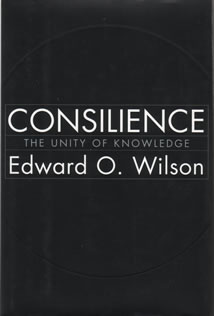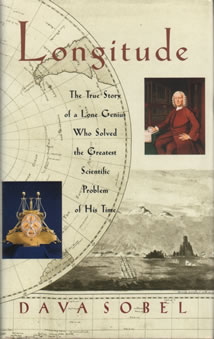ReBuilding
the Future Reading Index |
| The
reading list is divided into 10 sets of 50 books. Each
set has a theme however I will leave that to you
to discover. Each set, itself, makes an interesting synoptical reading experience - the sets, themselves, do the same. Many of these books have extensive and well prepared bibliographies that provide another layer of useful reading. Therefore, there are three levels of recursion of syntopical reading made possible: by focusing on a set of the books; combining the sets; and, going “down” into combinations of books suggested in the bibliographies. And, this reading activity can be approached by three recursion levels of participation: individual reading, team reading and group reading. These form the backbone of the syntopical reading element of the ReBuilding the Future experience. This process is outlined elsewhere [link]. |
| Is it possible to get through this material within a year. Yes it is if you follow Adler’s instructions [How to read a book] and if you make the habit of reading every day. No matter how busy I am, I do this. I read most mornings, upon waking, and in the evenings before sleep - even if there are but a few hours between sleep time and rising time. Beside these periods being extremely effective in promoting dreaming, thinking and retention, ending and starting a day with readings of choice is one of the most powerful way to “remind” yourself what your life is about and to keep your emotions temperate. I combine this reading practice with my journal work. With this combination of focused thought each day - no matter how that day plays out - I am insured contemplation, learning and a measure of creative accomplishment. This prevents any day, not matter the consequence of the many forces that come to bear, from being a “waste” and the sum of the two learning and creating efforts efforts, over decades, will produce an extraordinary accumulation of intellectual and design product. |
| Syntopical Reading is one component of the ReBuilding the Future Course. In addition to this are theme-focused lectures and seminars. These weave through and connect the content and themes fond in the book. There are three other components of the course: Weak Signal Research, to be performed by all instructors and students, which adds to our knowledge-base commonwealth; building a formal MODEL of the next generation, which will be “tested” by scenario and simulation exercises; and, Finally, each participant of the Course (student and instructors) will design a project which will apply what they have learned from the experience. |
| Although these 500 books, without your active participation in their content, alone will not be useful to you and your future, they do represent the tremendous legacy that civilization, to this point, have brought us. It is possible that humankind may fail the test of “graduation day,” as Bucky Fuller calls it [link: a future by design not default], but if we do so out of ignorance, and by failing to advance a better design for our future, we will deserve whatever fate comes our way. |
click on graphic, to the left to go to the SET |
|
 |
| An overview of human history. What IS the human enterprise? Will the future we “get” be a consequence of default - the lack of intent, design and creative project management - or by design and systematic prototyping? How do we create our future culture? |
|
Set
One of Ten |
 |
| Our present way of doing the business of humanity is not sustainable. There are many alternatives that work yet have not become part of the main stream. |
|
Set
Two of Ten
|
 |
| Why do we fragment our knowledge? why are our various disciples seen as isolated islands that have little relationship with one another? Why are they seen as hostile to one another each claiming excusive knowledge and wisdom? |
|
Set
Three of Ten
|
 |
|
Set
Four of Ten
|
 |
| We cannot afford to restore our economy?/ecology? We will make ten time the money cleaning up the mess that we made messing it up in the first place. |
|
Set
Five of Ten
|
 |
| What is our intellectual heritage? |
|
Set
Six of Ten
|
 |
| How do you build self-awareness and facilitate your own transformation(s)? |
|
Set
Seven of Ten
|
 |
| What will be HUMAN in 25 years? |
|
Set
Eight of Ten
|
 |
| How do networks organize themselves? |
|
Set
Nine of Ten
|
 |
| What is the role of invention and technology? |
|
Set
ten of Ten
|
| These sets provide a gateway to the 21st Century. They do not describe it nor predict it. They, if merely “learned,” will not provide you with what you must know. If used, however, as an index to a greater scope of reading; if employed to stimulate your thinking and exploration; if applied as a structure for a syntopical dialog with your peers; if this becomes the beginning data-base for a recreated future; then, you will find that you will stand remarkably prepared to embrace an uncertain future with confidence and conceptual efficacy. |
|
|
| GoTo: ReBuilding - Syntopical reading 500 #1 |
|
|
|
|
| GoTo: Matt Taylor - Hand Written Notebooks |
|
|
|
|
| GoTo: ReBuilding the Future |
|
|
|
|
| GoTo: ReBuilding - Syntopical Dialogs INDEX |
|
|
|
|
| GoTo: Syntopical Reading - and I Quote |
|
|
|
Matt
Taylor
Madrid
November 20, 2004
|

SolutionBox
voice of this document:
VISION • STRATEGY • EVALUATE
|
posted:
November 20, 2004
revised:
July 27, 2005
• 20041120.795091.mt • 20050827.213141.mt *
(note:
this document is about 80% finished)
Copyright© Matt
Taylor 2004, 2005
|
|
|